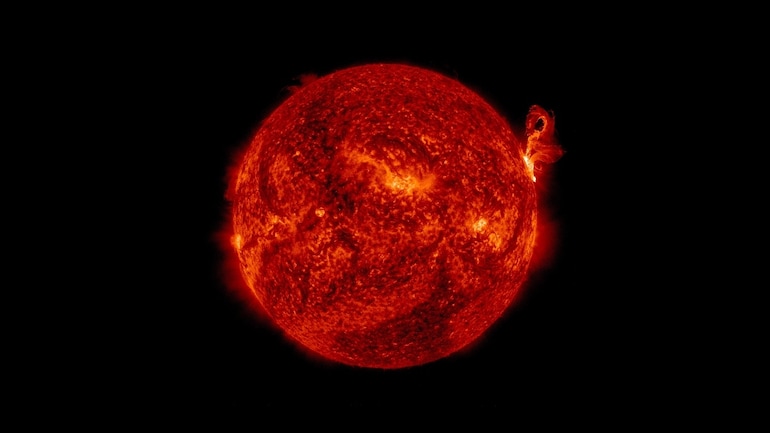The sun’s activities are ramping up speed as it enters its new cycle, with the bright star emitting a huge flare on Thursday. Sunspot AR2929 exploded, resulting in a massive M5.5-class solar flare captured in an extreme ultraviolet flash by NASA’s Solar Dynamics Observatory.
According to reports, an X-ray pulse ionized the top of the Earth’s atmosphere during the flare, prompting a shortwave radio blackout around the Indian Ocean. As a result, aviators, sailors, and amateur radio operators in the vicinity may have seen unexpected propagation effects at frequencies lower than 30 MHz.
Solar flares often occur in active zones, which are areas of the Sun characterized by high magnetic fields, which are frequently connected with sunspot groups. These magnetic fields can reach a point of instability and release energy in several ways as they evolve.
A solar flare is a rapid and violent explosion on the Sun’s surface produced by the unexpected release of large quantities of energy contained in magnetic fields. The explosion sends radiation out into the universe, forcing it towards planets in the solar system. Radio waves, x-rays, and gamma rays are examples of these radiations.
A solar flare has three stages: first is the precursor stage, in which mild X-Ray emissions prompt the release of magnetic energy. The second step, termed impulsive, involves protons and electrons being accelerated to energies of a million electron volts. Finally, the third stage is the steady accumulation and degradation of X-Rays.
The Thursday eruption was rated as an M class, which means it was of medium scale. They are capable of causing temporary radio blackouts that impact the Earth’s polar regions. In addition, minor radiation storms can occur after an M-class flare.
The geomagnetic disturbance is expected on January 22-23-24 as a series of Coronal Mass Ejections send direct hits to Earth’s magnetic field. Two CMEs were propelled into space by M-class flares from departing sunspot AR2929, while a third has also passed from the sun’s surface.
While they will not directly impact the globe, the three combined may cause mild G1-class geomagnetic storms. A geomagnetic storm is a severe disturbance of the Earth’s magnetosphere that happens when energy from the solar wind is exchanged extremely efficiently into the space environment around Earth.

